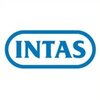Filter interviews by
Medanta the Medicity Clinical Pharmacist Interview Questions and Answers
Medanta the Medicity Clinical Pharmacist Interview Experiences
8 interviews found
(2 Questions)
- Q1. Examples of antibiotics, antifungal, antiviral
- Q2. Anticancer drugs examples
(2 Questions)
- Q1. Mechanism of beta lactum antibiotics
- Q2. Adverse drug reaction
(2 Questions)
- Q1. Mechanism of amlodipine
- Q2. Roles of clinical pharmacist
Skills evaluated in this interview
(3 Questions)
- Q1. Classification of antifungal
- Q2. Classification of antivirals
- Q3. Mechanism of action for antibiotics
(2 Questions)
- Q1. Tell us about yourself
- Q2. Why do see as good fit for this job
(1 Question)
- Q1. Why should we hire you
Skills evaluated in this interview
I appeared for an interview in Apr 2025, where I was asked the following questions.
- Q1. What is the definition of a medication error?
- Q2. What are drug interactions?
(3 Questions)
- Q1. Why are you interested in this position/company?
- Q2. What are your strengths and weaknesses?
- Q3. Why should we hire you?
Interview Preparation Tips
I applied via Walk-in and was interviewed in Apr 2023. There were 2 interview rounds.

(3 Questions)
- Q1. Roles and responsibilities of clinical pharmacists
- Q2. What is Adverse drug reactions
- Q3. What is your long term goal?
Interview Preparation Tips
Skills evaluated in this interview
I applied via Campus Placement and was interviewed before Mar 2023. There were 2 interview rounds.
(3 Questions)
- Q1. Where do you live
- Q2. Why do you choose this job opening
- Q3. Basics subject related questions will be asked.
(1 Question)
- Q1. Any questions related to pharmacology can be asked
Interview Preparation Tips
- Pharmacology
These are the main consideration.
I applied via Walk-in and was interviewed in Nov 2022. There were 4 interview rounds.

(1 Question)
- Q1. Antibiotics , antifungal, antiviral
(1 Question)
- Q1. Drug interactions and it's type
(1 Question)
- Q1. Role of clinical pharmacist
Interview Preparation Tips
- Pharmacology
Skills evaluated in this interview
I applied via Walk-in and was interviewed before Jul 2023. There were 3 interview rounds.
(2 Questions)
- Q1. Lasa drugs , antibiotics, antifungal
- Q2. Antihypertensive
(2 Questions)
- Q1. Classification of antibiotics, antifungal, antihypertensive mainly cephalosporins ,
- Q2. Beta blockers, Adverse drugs reaction and its types , side effects and allergy difference, Antihypertensive whole classification, Mechanism of action of asprin, paracetamol MOA of Antibiotics Broad and n...
(1 Question)
- Q1. Ask about some basic questions like antibiotics classification, aspirin dose , functions , pcm mechanism of action, antihypertensive whole classification
Interview Preparation Tips
- Drugs classification
- Job roles of clinical pharmacist
Then go to your interview
Skills evaluated in this interview
Top trending discussions






Interview questions from similar companies

Clinical Pharmacist Interview Questions & Answers
GlaxoSmithKline Pharmaceuticalsposted on 28 May 2025
I appeared for an interview before May 2024, where I was asked the following questions.
- Q1. What job position is offered by this company?
- Q2. What type of position are you seeking in your job search?
- Q3. What months do you typically work?
Interview Preparation Tips

Pharmacist Interview Questions & Answers
Zydus Lifesciencesposted on 10 May 2022
I appeared for an interview before May 2021.
You can talk about the topic in group discussion
You can express your knowledge in group discussion
Improve your communication skills
..
Interview Preparation Tips
Medanta the Medicity Interview FAQs
Some of the top questions asked at the Medanta the Medicity Clinical Pharmacist interview -
Tell us how to improve this page.
Medanta the Medicity Interviews By Designations
- Medanta the Medicity Staff Nurse Interview Questions
- Medanta the Medicity Clinical Pharmacist Interview Questions
- Medanta the Medicity Pharmacist Interview Questions
- Medanta the Medicity Operations Executive Interview Questions
- Medanta the Medicity Nursing Staff Interview Questions
- Medanta the Medicity Nurse Interview Questions
- Medanta the Medicity Executive Assistant Interview Questions
- Medanta the Medicity Nursing Officer Interview Questions
- Show more
Interview Questions for Popular Designations
Overall Interview Experience Rating
based on 10 interview experiences
Difficulty level
Duration
Interview Questions from Similar Companies
Medanta the Medicity Clinical Pharmacist Reviews and Ratings
based on 43 reviews
Rating in categories
|
Staff Nurse
621
salaries
| ₹1.9 L/yr - ₹6 L/yr |
|
Assistant Manager
158
salaries
| ₹4.8 L/yr - ₹10.6 L/yr |
|
Executive
120
salaries
| ₹2.2 L/yr - ₹5.4 L/yr |
|
Nursing Staff
108
salaries
| ₹1.8 L/yr - ₹4.8 L/yr |
|
Pharmacist
107
salaries
| ₹2.2 L/yr - ₹5 L/yr |

Lupin

Zydus Lifesciences

Hindustan Unilever

Standard Chartered
- Home >
- Interviews >
- Medanta the Medicity Interview Questions











